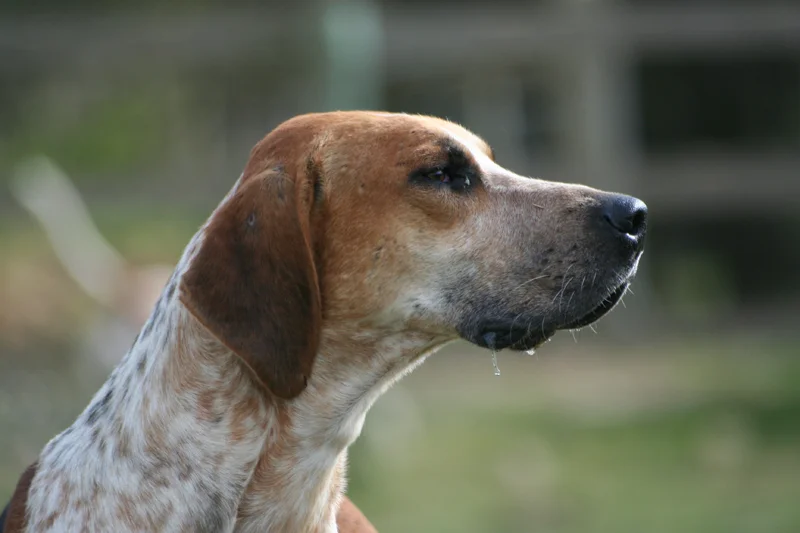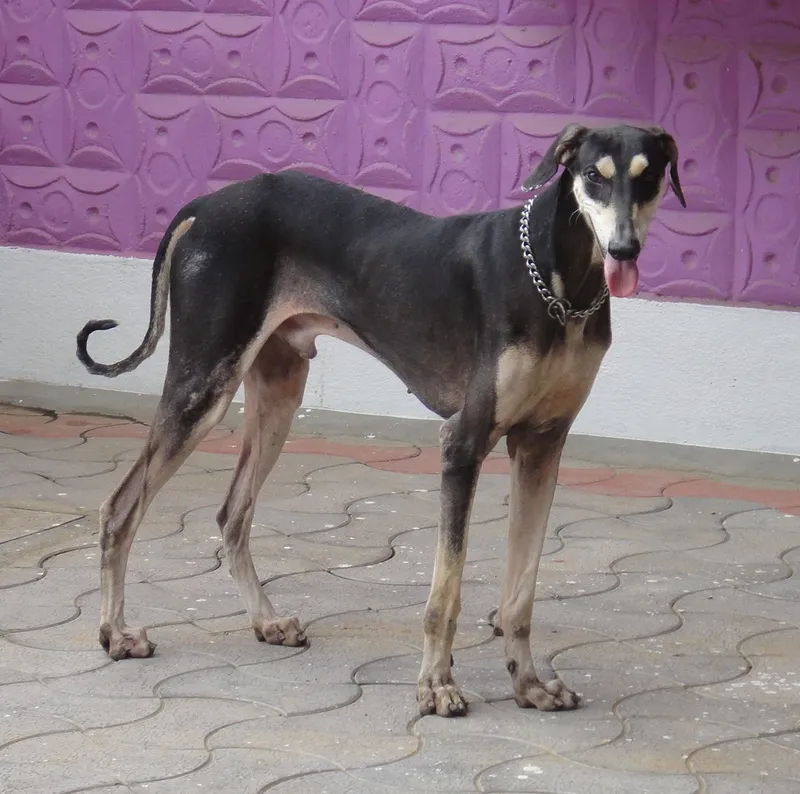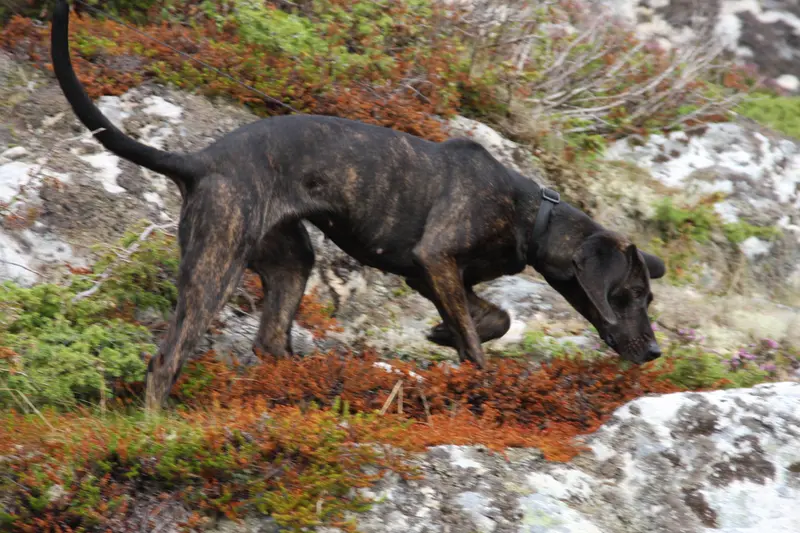Zerdava
The Zerdava, or Azawakh, is a medium-large sight hound from Mali, known for its elegance, loyalty, and hunting abilities. With minimal grooming needs and moderate exercise requirements, they make excellent companions for active families.
Overview
🐕Breed Overview
✨Key Traits
💡What Makes Zerdava Special
Zerdavas are characterized by their striking appearance and athletic build, which make them stand out among other breeds. Their keen eyesight and speed are essential traits that have been honed through generations of hunting.
This breed is known for its loyalty and protective nature, often forming deep bonds with their families. Zerdavas are sensitive and may require a gentle approach to training, as they can be easily distracted by their surroundings.
Their aloofness with strangers can be a challenge, but with proper socialization, they can learn to be more accepting. Overall, the Zerdava's unique combination of elegance, loyalty, and hunting instincts makes them a remarkable breed for those who appreciate their rich history and character.
The Zerdava, also known as the Azawakh, is an elegant and graceful breed originating from Mali, renowned for its hunting prowess and loyal companionship. With a height range of 23 to 29 inches and a weight between 33 to 55 pounds, these medium-large dogs are characterized by their slender build and angular features. Historically, Zerdavas were used by nomadic tribes for hunting gazelles in the vast open terrains of the Sahel region.
Their keen eyesight and speed make them exceptional hunters, while their strong bond with their families ensures they are devoted companions. Zerdavas are known for their aloofness with strangers, often displaying a sensitive and haughty demeanor. They require consistent training and socialization from an early age to mitigate their natural wariness of unfamiliar people and dogs.
With a moderate exercise requirement of 60 to 90 minutes daily, Zerdavas thrive in environments that allow them to run and explore. Their grooming needs are minimal, making them relatively low-maintenance in terms of coat care. As loyal and protective family members, Zerdavas are best suited for active households that can provide them with the physical and mental stimulation they need to flourish.
Their unique combination of elegance, loyalty, and hunting instinct makes them a remarkable breed for those who appreciate their rich history and character.
🎉Fun Facts
The Zerdava is known for its incredible speed and agility, making it one of the fastest dog breeds.
They have a strong 'hunt-on-sight' instinct, which means they may chase after small animals if they see them run.
This breed is known for its unique ability to bond closely with their families while remaining aloof with strangers.
Zerdavas are often described as having a regal demeanor, reflecting their noble heritage.
Breed Characteristics
Family & Friends
Good Behavior
Get Up & Go
Household Harmony
Temperament & Personality
✨Key Traits
🐕Core Temperament
The Zerdava's temperament is defined by its elegance and grace, combined with a loyal and protective nature. They are generally calm and reserved, especially around strangers, but are affectionate and devoted to their families.
This breed is independent and may exhibit stubbornness, making consistent training essential. Zerdavas are playful and enjoy engaging in activities that stimulate their hunting instincts.
While they can be friendly with children and familiar pets, their strong prey drive means they may not always be suitable for homes with small animals. Early socialization and training are crucial to help them develop into well-rounded companions.
💫Personality Profile
The Zerdava is an elegant and graceful breed, known for its loyalty and strong bond with its family. While they are affectionate with their loved ones, they tend to be aloof and sensitive around strangers, often displaying a haughty demeanor.
This breed is independent and may not always seek human interaction, preferring to observe their surroundings. Zerdavas are playful and enjoy engaging in activities that allow them to showcase their speed and agility.
However, they can be reserved and cautious, requiring proper socialization to ensure they are comfortable in various situations. Their strong prey drive means they may chase after small animals, making supervision essential during outdoor activities.
🔊Vocal Tendencies
The Zerdava is generally a quiet breed, with a low tendency to bark. They may vocalize occasionally, particularly when alerting their owners to unfamiliar sounds or sights.
However, they are not known for excessive barking, making them suitable for families living in close quarters or apartments. Their vocalizations are typically reserved for specific situations, such as when they feel threatened or when they are excited during playtime.
Overall, the Zerdava's calm demeanor contributes to a peaceful home environment.
Affection & Social Traits
Energy & Activity
Communication Style
Care Requirements
🏃♂️Exercise Requirements
Daily Exercise
The Zerdava, an ancient African sight hound, requires a significant amount of exercise to maintain its physical and mental well-being. Ideally, this breed should engage in at least 60 to 90 minutes of vigorous exercise each day. Activities such as running, fetching, and coursing are particularly beneficial, as they cater to the Zerdava's strong hunting instincts and high energy levels.
Regular exercise not only helps in weight management but also promotes cardiovascular health and reduces behavioral issues that may arise from pent-up energy. Puppies should gradually increase their exercise as they grow, while adult dogs will thrive on consistent, high-intensity activities. Senior Zerdavas may require less intense exercise but should still engage in regular walks and play to keep them active and healthy.
Insufficient exercise can lead to weight gain, destructive behavior, and increased anxiety, making it crucial for owners to prioritize their Zerdava's activity needs.
Preferred Activities
🏠Living & Adaptability
Space Requirements
Zerdavas thrive in environments that allow for ample space to run and play. While they can adapt to apartment living if provided with sufficient exercise, they are best suited for homes with large yards or access to open areas where they can stretch their legs.
Owners in smaller living situations should ensure they can commit to daily outings in parks or open fields. The Zerdava's size and energy level necessitate a space where they can safely explore and engage in physical activities without feeling confined.
Lack of adequate space may lead to frustration and behavioral issues, so it's essential for potential owners to consider their living arrangements carefully.
Climate Preference
🍲Feeding Guide
Schedule
Food Types
Portion Size
Special Nutritional Needs
Zerdavas may have specific dietary needs based on their activity level and age. High-quality protein is essential for maintaining their muscle mass and energy levels.
Owners should monitor for any food sensitivities and adjust their diet accordingly. Supplements such as omega fatty acids can support skin and coat health, while joint supplements may be beneficial for older dogs.
✨Grooming Requirements
Grooming Overview
The Zerdava has a short, smooth coat that requires minimal grooming. Regular brushing once a week is sufficient to remove loose hair and keep the coat healthy.
Bathing should be done only as needed, typically every few months, to maintain the natural oils in their skin. Owners should also regularly check and clean their ears, trim their nails, and brush their teeth to ensure overall hygiene.
Due to their low grooming needs, Zerdavas are considered low maintenance in this regard, making them an excellent choice for those who prefer a breed that doesn't require extensive coat care.
Care Schedule
Brush weekly; bathe as needed, typically every few months; trim nails every 2-4 weeks.
Health Profile
⚕️Health Care
Regular health care is essential for the Zerdava's longevity. Routine veterinary check-ups, vaccinations, and preventive treatments can help detect and address health issues early.
Owners should establish a health care routine that includes dental care, parasite prevention, and regular exercise to maintain optimal health throughout their dog's life. Early detection of health problems can significantly impact the quality and length of life for Zerdavas, making proactive health management a priority for responsible owners.
Health Issues Overview
⏳Average Lifespan
Genetic Factors
Genetics play a significant role in the Zerdava's lifespan, with hereditary health issues being a concern for potential owners. Responsible breeding practices that prioritize genetic diversity can help reduce the risk of inherited conditions.
Prospective owners should seek reputable breeders who conduct health testing on their breeding stock to ensure the best possible genetic outcomes for their puppies. Understanding the breed's genetic predispositions can help owners make informed decisions about their dog's health and care.
Living Conditions
The Zerdava's lifespan can be influenced by various environmental factors, including housing conditions, climate, and social interactions. Providing a safe and stimulating environment is crucial for their well-being.
Zerdavas thrive in moderate climates, as extreme heat or cold can affect their health. Regular socialization and interaction with family members can enhance their emotional health, contributing to a longer lifespan.
Ensuring they have access to open spaces for exercise and play is also vital for promoting longevity and overall happiness.
🏥Common Health Issues
Hip Dysplasia
Warning Signs
🔬Diagnosis
Veterinarians typically diagnose hip dysplasia through physical examinations and X-rays.
💊Treatment
Treatment options may include weight management, physical therapy, and in severe cases, surgical intervention.
📝Management Tips
Maintain a healthy weight, provide joint supplements, and engage in low-impact exercises to reduce stress on the joints.
Bloat (Gastric Dilatation Volvulus)
Warning Signs
🔬Diagnosis
Diagnosis is often made through physical examination and X-rays to assess the stomach's position.
💊Treatment
Emergency treatment may involve decompression of the stomach and surgical intervention to prevent recurrence.
📝Management Tips
Feed smaller, more frequent meals and avoid vigorous exercise immediately after eating to reduce the risk of bloat.
🛡️Preventive Care
🔬Hip Evaluation
Hip Evaluation assesses the hip joints for dysplasia and other abnormalities, which can affect mobility and quality of life.
📅 Recommended at 12 months and again at 2 years of age.
🔬Elbow Evaluation
Elbow Evaluation checks for elbow dysplasia, which can lead to pain and lameness in the front legs.
📅 Recommended at 12 months and again at 2 years of age.
🔬Thyroid Testing
Thyroid Testing screens for hypothyroidism, a common condition that can affect energy levels and overall health.
📅 Recommended annually after 2 years of age.
Training
🧠Intelligence & Trainability
💪Work Drive
Zerdavas possess a strong work drive, stemming from their historical role as hunting dogs. They thrive on tasks that engage their natural instincts, such as running, chasing, and exploring.
Providing mental stimulation through puzzle toys or scent games can help satisfy their need for engagement. Regular exercise and activities that mimic hunting, like lure coursing, are essential to keep them mentally and physically fulfilled.
Without adequate stimulation, Zerdavas may become bored and exhibit destructive behaviors, making it crucial for owners to provide a variety of activities to keep them engaged.
⚠️Training Considerations
Training a Zerdava can present some challenges due to their independent nature and strong hunting instincts. They may exhibit stubbornness and a lack of focus during training sessions, particularly if they are distracted by scents or sights.
To overcome these challenges, owners should employ positive reinforcement techniques, using treats and praise to motivate the dog. Consistency and patience are key, as Zerdavas may take longer to learn commands compared to other breeds.
Early socialization is crucial to help them become more comfortable around strangers and other dogs, reducing their natural aloofness. Engaging them in activities that stimulate their hunting instincts, such as lure coursing, can also enhance their training experience.
📝Training Tips
Training a Zerdava requires a firm yet gentle approach. Start with basic obedience commands and gradually introduce more complex tasks as the dog becomes more responsive. Short, engaging training sessions are recommended to maintain their interest.
Incorporating play into training can help keep the Zerdava motivated. Socialization should begin early, exposing them to various environments, people, and other animals to foster a well-rounded temperament. Consistent routines and clear boundaries will help the Zerdava understand expectations, making training more effective.
Owners should also be aware of the breed's strong prey drive and take precautions to prevent chasing behavior during walks or outings.
History & Heritage
📜Origin Story
The Zerdava, or Azawakh, originates from the Azawakh Valley in Mali, a region characterized by its arid climate and vast open spaces. Historically, the breed was developed by the Tuareg people, who relied on these dogs for hunting and protection.
The Zerdava's keen eyesight and speed made it an exceptional hunter, capable of chasing down prey in the harsh terrain. As nomadic tribes moved across the Sahel, they took their Zerdavas with them, fostering a deep bond between the dogs and their owners.
This relationship is marked by loyalty and mutual respect, as the Zerdava not only served as a hunting companion but also as a guardian of the family. The breed's elegant appearance and graceful movements have made it a symbol of pride among the Tuareg, and it continues to be celebrated in cultural traditions and ceremonies.
⏳Development History
The Zerdava's history dates back to ancient times in the Sahel region of West Africa, particularly in Mali. This breed was developed by the nomadic tribes for hunting purposes, specifically for coursing game like gazelles.
Over time, the Zerdava has been recognized for its unique physical characteristics, including its slender, athletic build and elegant stature. The breed has remained relatively unchanged due to its specific purpose and the traditional breeding practices of the tribes.
The Zerdava was officially recognized by the AKC as part of the Foundation Stock Service, which acknowledges its historical significance and unique traits. Today, the breed is gaining popularity outside its native region, appreciated for its beauty and companionship.
🛡️Purpose & Historical Role
The primary purpose of the Zerdava has been hunting, particularly for coursing game such as gazelles. These dogs were bred for their speed, agility, and keen eyesight, allowing them to excel in open terrains.
In addition to hunting, Zerdavas have also served as loyal companions and guardians for their families. Their protective instincts make them excellent watchdogs, although they are typically aloof with strangers.
The Zerdava's historical role as a hunting dog has shaped its temperament and physical characteristics, making it a unique breed that embodies both elegance and functionality.
🏺Cultural Significance
The Zerdava, also known as the Azawakh, holds a significant place in the culture of the Tuareg and other nomadic tribes of the Sahel region in West Africa. Traditionally, these dogs were used for hunting game such as gazelles and as loyal companions to their owners.
Their elegant appearance and graceful movements have made them a symbol of nobility and status among the tribes. The Zerdava's role extends beyond hunting; they are also cherished as family pets, known for their loyalty and protective nature.
Their presence in various cultural practices, including traditional ceremonies, highlights their importance in the social fabric of the communities that have bred and raised them for centuries.
Conservation Status
This breed is less common but has stable populations in certain regions.









